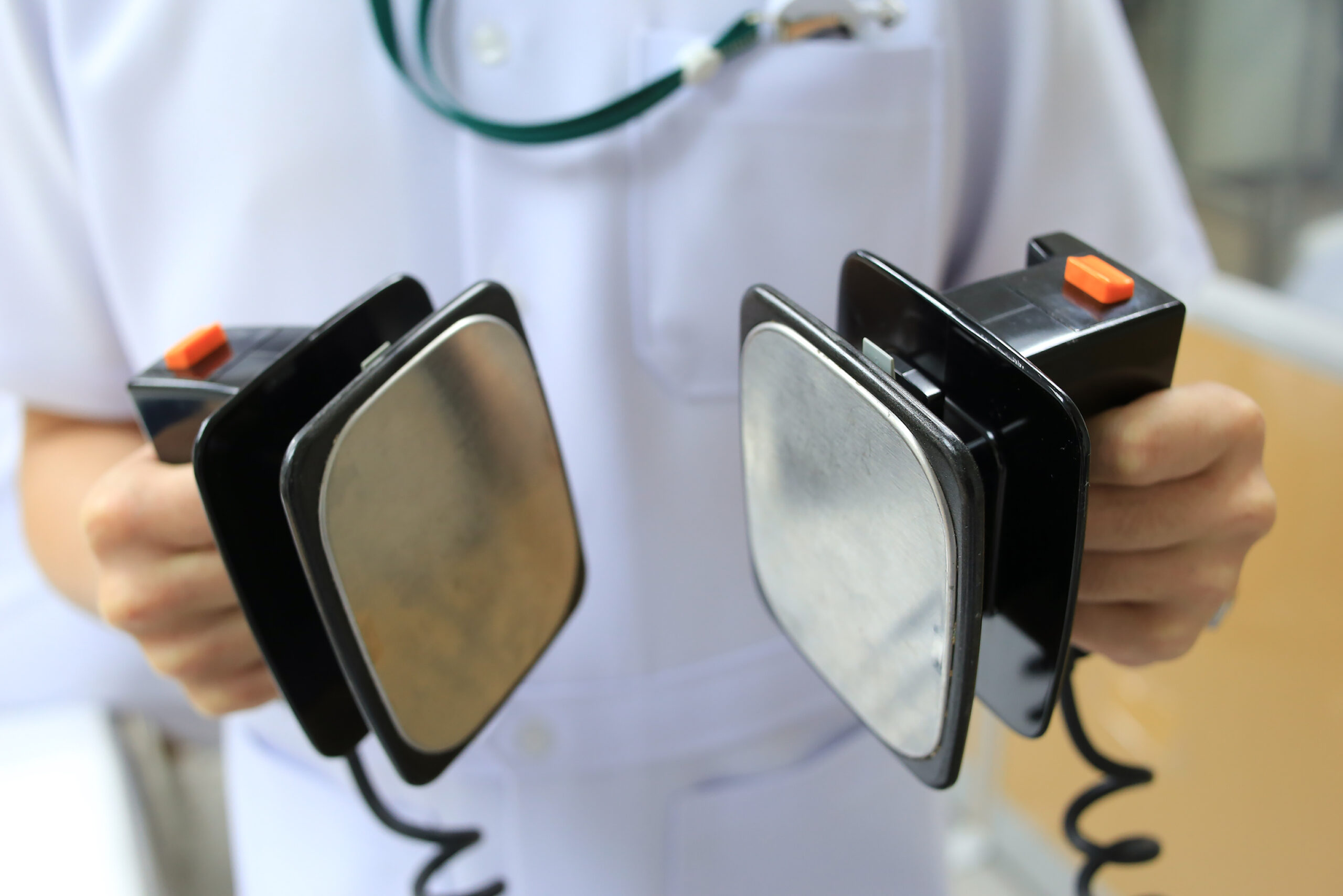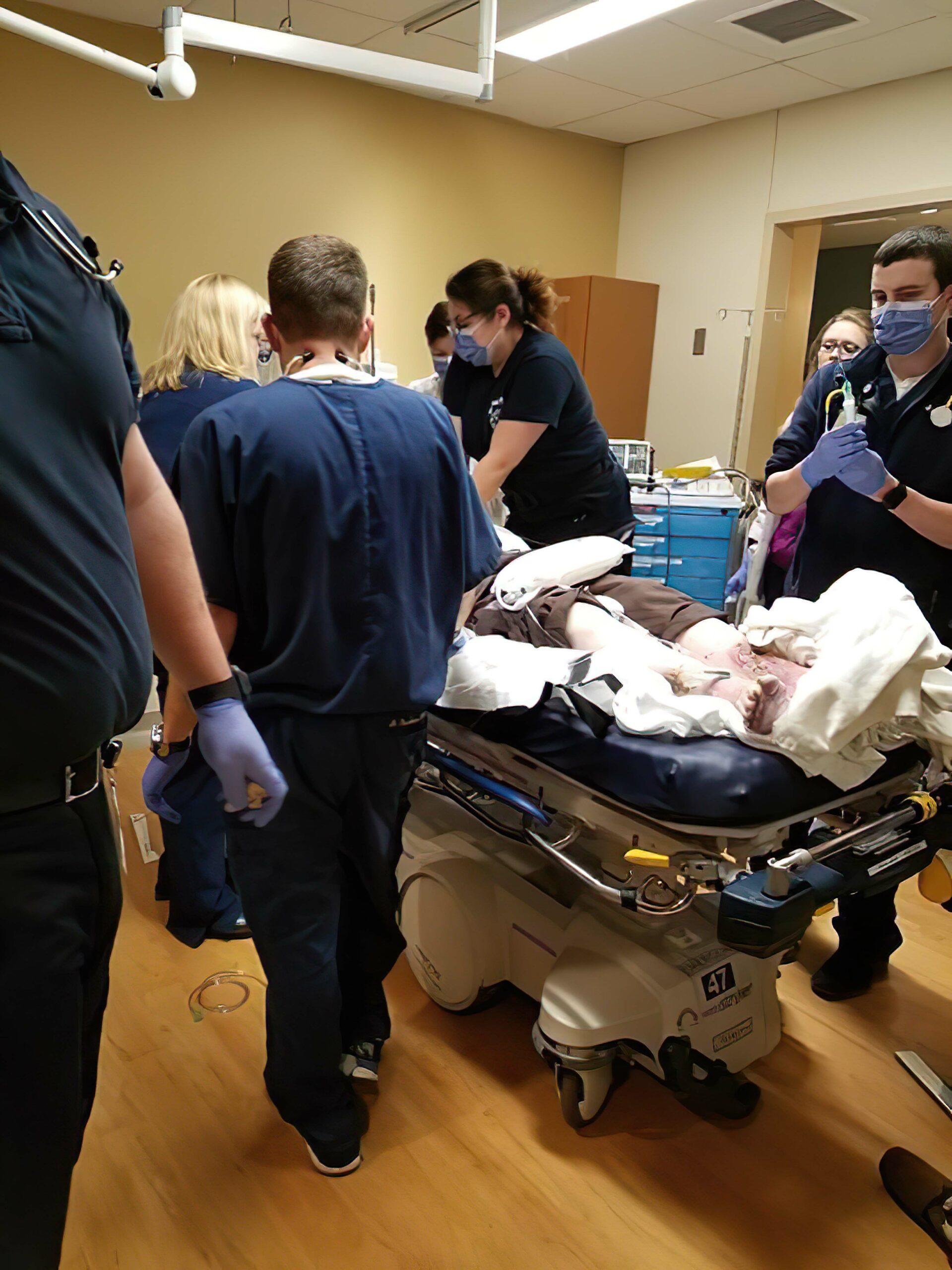Positions for 6-Person Teams
Positions for 6-Person Teams
Short Description
This graphic provides the ideal positions when six members are available in a resuscitation effort.
Graphic at a Glance
- The ideal resuscitation team consists of six individuals.
- In an effective team, each member knows their role in the resuscitation.
- For the most effective resuscitation, the six team members should be in specific positions around the patient.
Related Video: Performing CPR with a Team
Goals for 6-Person Team Positions
The team will understand:
- the functions of each member of the team.
- the optimal positioning of each team member for resuscitation.
Positions for 6-Person Teams
When participating in a resuscitation effort, every team member understands where to stand and the tasks for their specific role. This can help to create a high-performance team that ensures exceptional patient outcomes.
Six Person High-Performance Team Flowchart
The Team Members
ACLS guidelines assume that each team member is proficient in their assigned scope of practice. The facility has documentation of each role’s duties and responsibilities, and members are aware of each role. Members must practice consistently and show a commitment to the success of this high-performance team.
The Team Leader
The team leader is responsible for organizing the group. This individual is the person in charge of the resuscitation. One team member qualified to perform any task must be identified to fill this critical role. The team leader monitors everything that is happening to identify issues and determine appropriate interventions.
The team leader ensures a harmonious working relationship and is ready to provide backup if a team member falters. If six members are not available, the team leader typically performs the tasks for a vacant or vacated role.
The leader influences the morale of the whole team and should be able to showcase the highest quality of resuscitative care and behavior.
IV/IO/Medications
This team member has the training and license to obtain intravascular access and administer medications. This individual should have unobstructed access to the patient’s IV or IO site and the medications in the crash cart.
Related Video: 10 Cardiac Drugs to Know for the Pharmacology Test
Timer/Recorder
This team member is typically in a position to see what is happening and record all activities. This individual must be able to see the clock in the room to accurately record times and alert the team when additional doses of medication are to be given.
Compressor
This team member stands on one side of the bed. This person is primarily responsible for performing compressions and assessing the patient’s response at the team leader’s direction. This team member alternates with the Defibrillator position to prevent fatigue.
Monitor/Defibrillator
This team member stands on the opposite side of the bed from the Compressor in a position where they can easily perform compressions when needed. This individual is primarily responsible for operating the AED or monitor at the team leader’s direction. The Defibrillator trades out roles with the Compressor.

A person assuming the defibrillator role.
Airway
This team member stands at the head of the bed, where they can easily open the airway and manage oxygenation and ventilation. This person must be skilled at inserting and managing airway adjuncts as needed.
Related Video: Maintaining Airway Patency

Team members with assigned roles (e.g., defibrillator, airway, etc.).